Deer Habitat Improvement
Deer management is habitat management. Habitat is the foundation on which a white-tailed deer herd is built. Habitat quality impacts deer physically and psychologically. Deer get a lot of environmental cues from the habitat in which they live. Although the vegetation types may change from area to area depending on where individual deer live, all deer need food, cover, water, and space. These four components comprise a white-tailed deer’s habitat.
It’s important to know what deer eat if you are interested in managing deer and deer habitat. A white-tailed deer’s diet consists of primarily two classes of food: forbs and browse. Forbs are palatable broadleaf plants such as “weeds” and wildflowers. They are very high in protein, but they tend to occur seasonally. Browse consists of the leaves and stems of palatable trees, brush and vines. Browse comprises the bread and butter of a whitetail’s diet. In order to improve deer habitat on a property, the goal is to improve deer foods and critical cover.
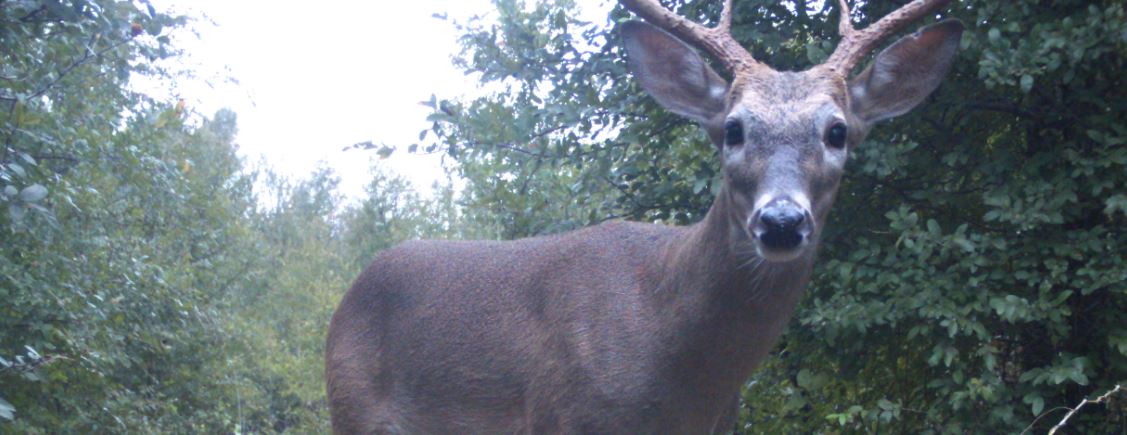
In many cases, because of improper farming, ranching, timber harvest or other land-use practices, deer habitat in an area is degraded. However, it is possible to provide optimal food and cover for whitetail by managing even the poorest of habitat. The same tools that destroyed (or degraded) a piece of land can rebuild and improve it for deer and other wildlife. The 5 tools for deer habitat management include those originally proposed by Aldo Leopold for wildlife management:
- Axe – Brush management to enhance habitat
- Cow – Prescribed grazing for quality forage
- Plow – Habitat restoration and food plots
- Fire – Prescribed burning for long-term management
- Gun – Harvest as needed to achieve goals
Deer Habitat Management – Take an Axe to It
Deer habitat and woody plants go hand-in-hand. However, too much brush or too little is real problem for deer management-minded land owners. Land managers have been cutting and removing brush for years, but that is also the same plants that are the heart of a whitetail’s diet. Large, continuous woodlands are not ideal for white-tailed deer either.
Large expanses of forest canopy block out sunlight and prevent the growth of browse and forb species. As a result, most beneficial browse plants only exist in forest openings or along the edges of the wood line.
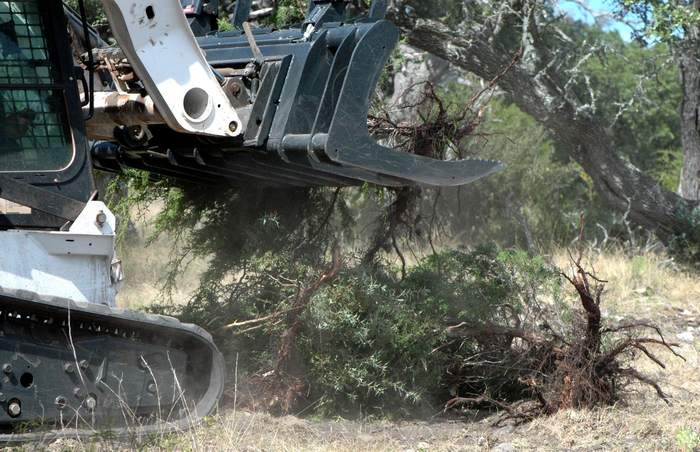
As you have now read, too much or too little brush/wooded area is bad for overall deer habitat. In general, it is best that woody or brushy areas comprise anywhere from 40-60 percent of a deer’s habitat. The best thing a land manager can do from a deer management standpoint is to maintain wooded cover on about 50% of a property.
This suggested percentage can go up or down depending on the composition of the surrounding properties. In open areas, aim for a little more brush cover on a property. In heavily wooded areas shoot for a little less cover since it’s found in abundance elsewhere.
Open up forested or brushed areas using chainsaws, tractors, skid-steer loaders, and bulldozers. A chainsaw gets the job done, but large equipment makes more sense depending of the scope of the work. Hydraulic shears on skid-steer tractors are awesome for shrubland and forest management and promote more forbs and woody regrowth. Bulldozers are often used to create openings where large trees exists.
Anytime the soil is disturbed there is a chance for erosion to take place. As a result, do not disturb the soil in areas where erosion is an issue. Avoid areas along creeks, river, and the sides of hills and mountains.
Whitetail Habitat Management Using Cows
An excellent tool for deer habitat management is the proper use of cattle. Planned grazing can lead to increased plant diversity. Often times pastures and wooded areas are overgrazed by cattle. This destroys deer habitat. However, proper cattle grazing improves deer habitat and support sound deer management. Not all properties are suitable for cows, but use them to benefit deer in areas where it makes sense.
The main role of grazing in a wildlife management program is to reduce the quantity of grass in areas. Grass-dominated areas become rank and forb diversity decreases. Removal of some grass cover allows sunlight to reach the lower-growing forbs, which are important deer foods. Remember that forbs are very high in protein, often at the 25-35% level. Whitetail eat very little grass, but cows eat grass, forbs and browse. Proper cattle grazing improves plant communities and the key plants consumed by whitetail.
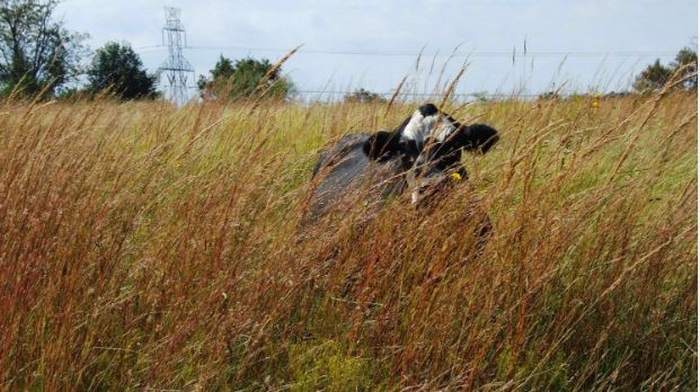
Deer habitat improvement and proper livestock grazing rates go hand-in-hand. For this to work, a property requires cross-fencing in most cases. This creates multiple pastures and allows for the movement of livestock. Rotational grazing of cattle allows pastures to be rested (deferred) during specified times of the year. This knocks back grass, promotes forbs, but also allows grass to remain healthy.
Some examples of grazing options in order of preference are: a short duration or “time control” system; a high intensity-low frequency system (HILF); a 3 pasture-1 herd system, and the 4 pasture-3 herd rotational grazing system. Each requires different degrees of involvement and fencing.
If you are interested in both cattle grazing and deer management, learn more about proper grazing techniques and stocking rates for your area. Cattle do not belong on every property, but cows can help improve deer habitat when used correctly.
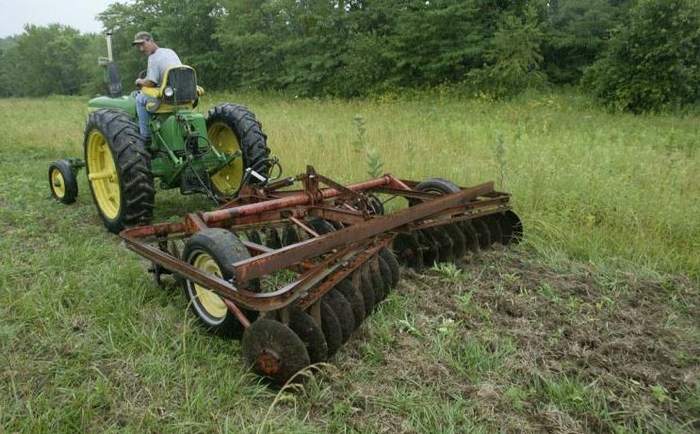
Soil disturbance, such as through farming practices, have actually destroyed deer habitat in the past. However, disking is a beneficial deer habitat management practice. Disking increases deer foods, especially forbs, when properly implemented. The practice of soil disturbance sets back plant succession and promotes the growth of desirable whitetail foods. Disking disturbs the soil, creates new plant growth, and promotes increased plant diversity.
It’s a good management practice, but soil disturbance may not be feasible in your area. This is particularly true for properties with shallow, rocky soils or those vulnerable to erosion. Although soil disturbance promotes forb growth, it is not a management practice that should be used on a large scale. Disked areas should comprise only 2-4% of a property.
Prescribed Fire for Deer Habitat Management
Another effective tool for deer as well as turkey habitat management is prescribed fire. A well-executed prescribed fire program is hard to beat. Fire is an awesome tool for managing deer and wildlife habitat. It works best when combined with a pasture deferment program and deer harvest management. Burning increases plant quantity and quality and enhances habitat diversity. Many plant species are tolerant of fire and some plants actually require fire for seed germination.
Western states are more prone to using fire to effectively to improve mule deer habitat. Eastern states often enhance forested areas for white-tailed deer through the burning of forests understory. The periodic use of fire on a property will lead to better deer habitat. In general, fire needs to be applied more often in high rainfall areas and less in more arid environments. This means using fire on a specific area or pasture about every 3-10 years.
Prescribed fire will top-kill or burn back many browse species. However, fire is not intended to harm established hardwood trees. The woody plants that deer use for browse will re-sprout quickly. Burning returns nutrients tied up in dead or unusable plants into the ground. Those nutrients then get carried into growing plants. As a result, new growth after fires is much more nutritious to white-tailed deer.
One thing to keep in mind—never burn more than about 20% of your property in any one year. If you burn it all, deer will have nothing to eat! Well, at least for a little while on your property.
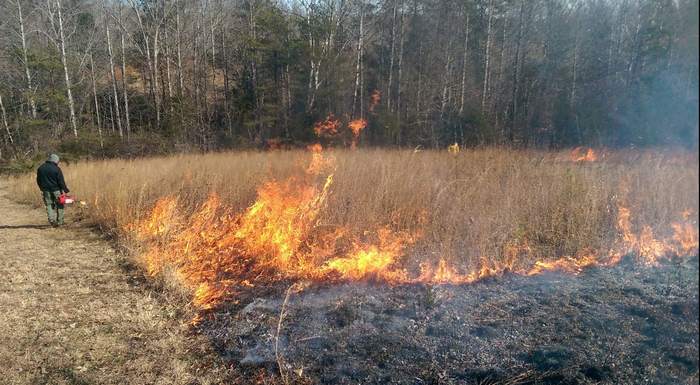
Graze burned pastures immediately with cows to reduce grasses that compete with forbs. Then, remove cattle to allow forbs to establish following livestock use. Leave portions of the property in (permanently) unburned cover to ensure that plants intolerant of fire are part of a property’s diversity.
A burning schedule is recommended to give priority to burning in the winter and early spring, before green-up. Even with the best laid plans, “windows of opportunity” for carrying out prescribed fire depends on humidity, wind, and fuel moisture. Request assistance and/or advice from agencies such as Texas Parks and Wildlife Department or the Natural Resources Conservation Service if you are an inexperience with prescribed fire.
While instructional materials are available, it is suggested that the novice assist on multiple burns conducted by an experienced person before attempting the first prescribed fire.
Hunting, Surveys for Habitat Management
Proper deer harvest is the final and perhaps the most enjoyable management practice required for sound deer management. In the past, guns and market hunting caused the decline of many wildlife species. Game laws today attempt to manage state-wide or county-wide deer populations. Those regulations protect the resource as a whole, but they are not 100% applicable to any single property. All states have personal bag limits for hunters, but managers interested in deer management must harvest according to the goals and objectives for their deer herd and the property. Proper deer harvest is essential.
Annual deer harvest is based on many factors. Herd objectives and parameters are important. A deer manager must know what they are working with. The local deer habitat and the whitetail population need to be sized up. It’s a good idea to begin collecting and recording deer survey data annually. Conduct surveys in late-summer and early-fall. Many managers and hunters proclaim an interest in managing the deer found on their property, but have zero population data. It’s impossible to manage something you have no information about.
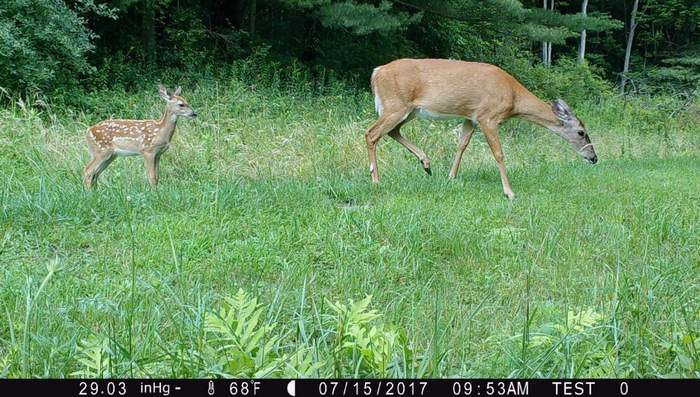
The type of surveys used to estimate the deer found on a property will vary. In most cases, spotlight surveys, daylight surveys, camera surveys, or some combination thereof will work for you. To set up a deer survey and find out more about managing your deer herd, I’d recommend contacting a state wildlife biologist in your area. These folks are very knowledgeable and can provide great advice at no additional costs to you.
Deer Habitat Improvement Takes Planning & Management
A land manager can do a lot with the 5 deer habitat management tools covered in this article. I hope you found an overview of these practices helpful for the management of the deer and habitat on your property. A single-species approach to wildlife management is not always a holistic approach to making better wildlife habitat. However, many of these deer habitat management practices improve habitat for other game and nongame species. This is a win-win for property owners and wildlife.
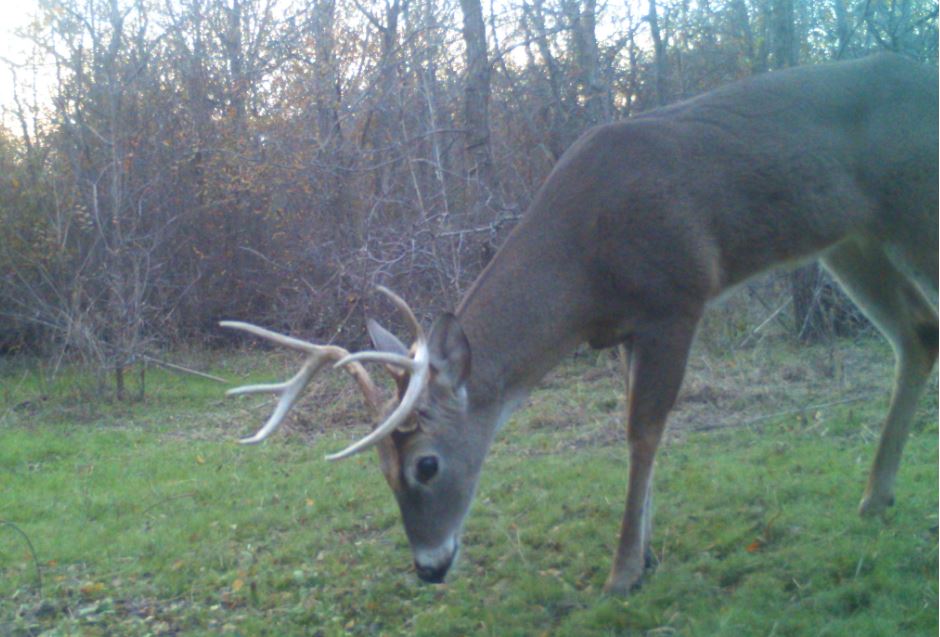
The key to managing natural resources is to use a holistic approach, where all of Leopold’s tools—axe, cow, plow, fire, and gun—are applied to develop and maintain healthy plant communities. Single species deserve less attention, while the system in which they thrive requires more. Make a property great for all native wildlife and white-tailed deer will thrive.
Knowing how a system functions, then applying the techniques with which that system developed (e.g., moderate cattle grazing, prescribed burning, hunting) is imperative for its continued existence. It’s basic habitat management. Improve the deer habitat found on your property and the white-tailed deer that live there will benefit tremendously.
Hi I am a 9th grade student at Clearfield Area School District in Clearfield,Pa and am doing a research paper on how to stimulate antler growth and was wondering if you would be willing to take the time to answer a few questions I have.
Thanks,
Haden
Haden, yes, just let me know what you need to know.